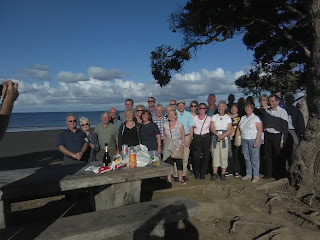Hello, a great day visiting Angkor Wat, this is one of the great wonders of the world, a lot of walking and climbing ....
"The whole Angkor period spans for more than VI centuries, and more precisely from IX till XV century. During this period the Khmer empire reached its maximum splendor as one of the most powerful southeast asian kingdoms. In this period the whole area of Angkor was buit. We can consider Jayavarman II as the man that started everything. He define himself Devaraja (good king) and he established the Khmer empire in 802. After him, Indravarman, a king considered by many of its time an usurper: we prefer to remember him for starting building the Baray, a complex irrigation system to bring waters in the area of Angkor. He also started to build the Bakong and the Preah Ko temples. His son Yasovarman went further in his father's project: he built the Phnom Bakheng and the Lolei temples, and with him, Angkor become the new capital of the kingdom. These two king further extent the Baray's system too.
Then the capital was moved to Koh Ker for a short period, under the kingdom of Jayavarman IV, an usurper, but after only 14 years Angkor become again the capital under Rajendravarman II. His son, Jayavarman V, was instead a great king, and with him the empire expanded to its maximum extent. Two wonderful temples, as Banteay Srei and Ta Keo were built.
After him, Udayaditavarman II built the pyramid of Baphuon and the western Mebon (we are now at the half of XI century), and here we are really close to the very peak of the Khmer civilization, two great king the left once forever their footstep in the history of this planet and they are Suryavarman II and Jayavarman II. The first king built Bang Melea but it also the one that built Angkor Wat. The second king has built Preach Khan, Ta Phrom and Angkor Thom.
As you will see with your eyes these last temple are traces of a high level civilization, with an exquisite taste for art. An enormous job that involved not only an army of thousands workers doing the hard job, building, moving rock and materials and so on. There was another parallel army of thousands of artists and artisans. Angkor Wat is also them. We will never know their names, or their faces, but what they left us fulfill our hearts with something magic. The walls of Angkor, they also speak about their lives, their customs, their salaries: Angkor was not only a religious place, but a capital crowded with a million people."
We then returned to the city for lunch at Viroths Restaurant for a very nice lunch. We then visited the Ecole D'Artisan, here the local people make handicrafts etc, most things here are made by hand have a look at their website it fully explains the workings ... http://www.artisansdangkor.com following our visit we had a short drive to Tonle Sap Lake for a boat ride (the last one)!! here we passed a fishing village built on stilts into the lake, and the local boats going around selling their merchandise, and then it was back to the Hotel for "Happy Hour" and Buffet Dinner, keeping up our strength for our final morning of Temples.
 |
| Angkor Wat Entrance |
 |
| Angkor Wat Main Building 5 towers |
 |
| Wall Relief |
 |
| Fruit and Vegetable seller on Tonle Sap Lake |
 |
| Local Grocery Boat |
 |
| Fish anyone ... |









Comments
Post a Comment